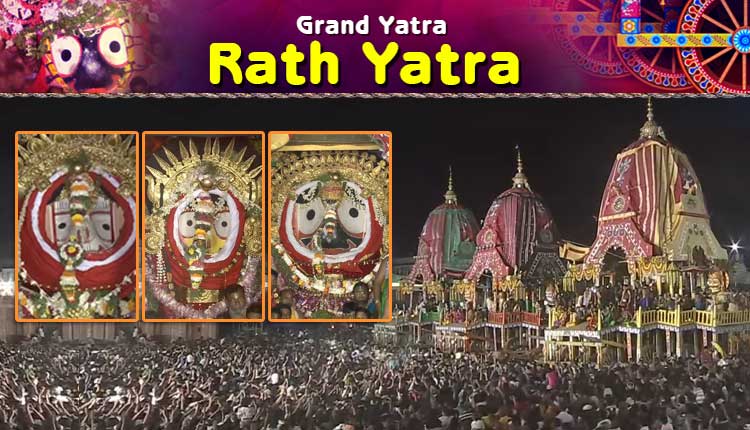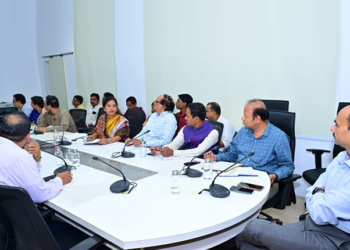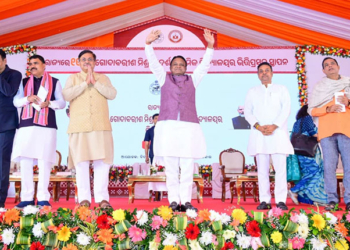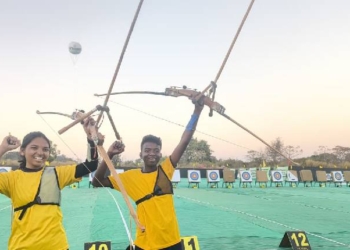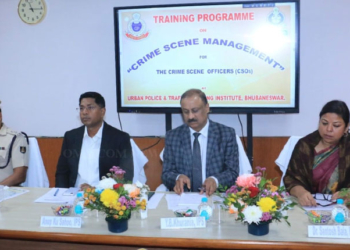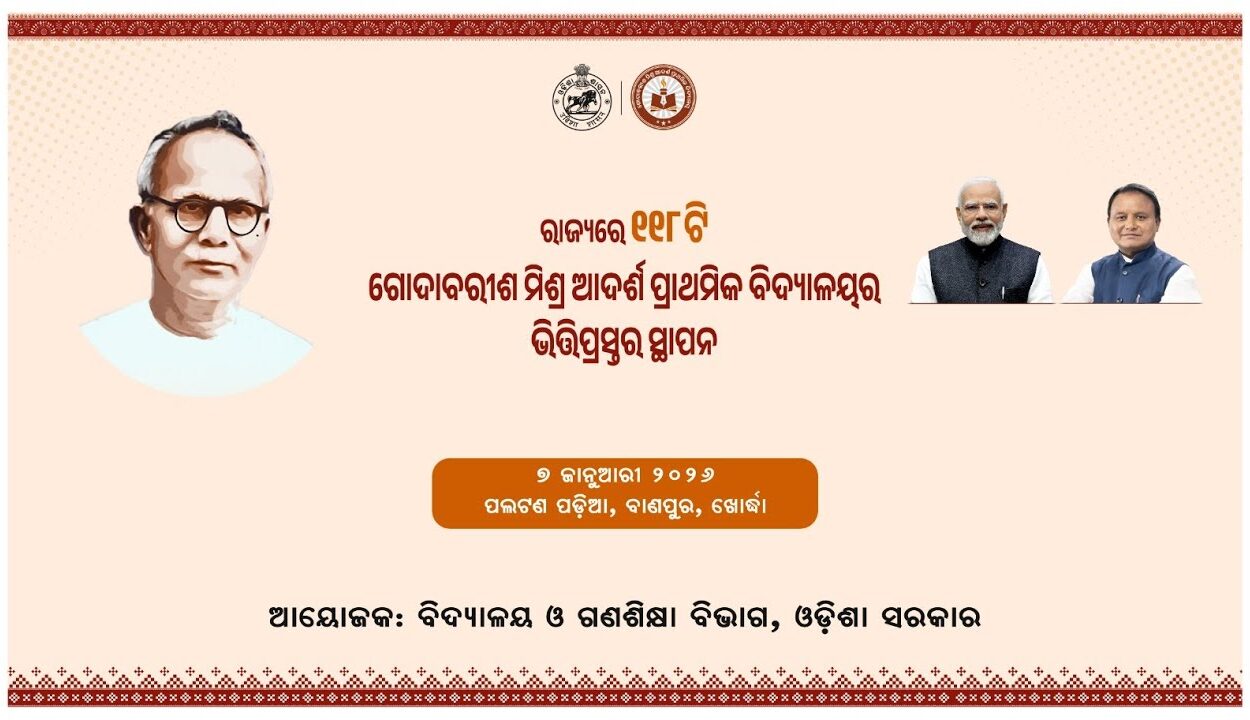Puri: Around 15 lakh devotees gathered in Puri on Wednesday to witness the “Suna Besha” ritual, where Lord Jagannath’s idol, seated on a chariot, was adorned with gold ornaments embedded with precious stones. The idols of His siblings, Devi Subhadra and Lord Balabhadra, were similarly decorated with golden jewellery and attire atop their chariots in front of the ‘Singha Dwar’ (Lion’s Gate) of the 12th-century temple.
The sibling deities were adorned with gold jewellery weighing nearly 208 kg, a tradition believed to have begun in the 15th century. The “Suna Besha” ritual takes place two days after the deities return to Shree Jagannath Temple following their nine-day stay at Gundicha Temple, considered their birthplace.
Devotees could view the adorned deities until 11 pm. Puri district Collector Siddharth Shankar Swain assured that arrangements were made for smooth darshan for the massive crowd, with the golden attires being removed around 11 pm.
The gold ornaments, stored in the outer chamber of the Ratna Bhadar treasury, included hands, feet, third eyes, crowns, peacock feathers, earrings, necklaces, lotus, and conch. These are escorted to the chariots by armed security personnel, temple officials, and priests.
According researchers of Shree Jagannath culture, the “Suna Besha” ritual began in 1460 AD during the reign of King Kapilendra Deb, who donated gold and diamonds to the temple after his victories in southern India. Initially, the deities were adorned with 138 designs of gold ornaments, though this number has now reduced to 20-30, with the designs remaining unchanged. The ornaments are repaired as needed using raw gold donated by pilgrims.
The deities are adorned in golden jewellery five times a year: once outside the temple during Rath Yatra and four times inside during Dussehra, Kartika Purnima, Pausa Purnima, and Dola Purnima.
To ensure security, around 5,700 police personnel were deployed in Puri. Additionally, the East Coast Railways operated 46 special trains to accommodate the influx of devotees.




